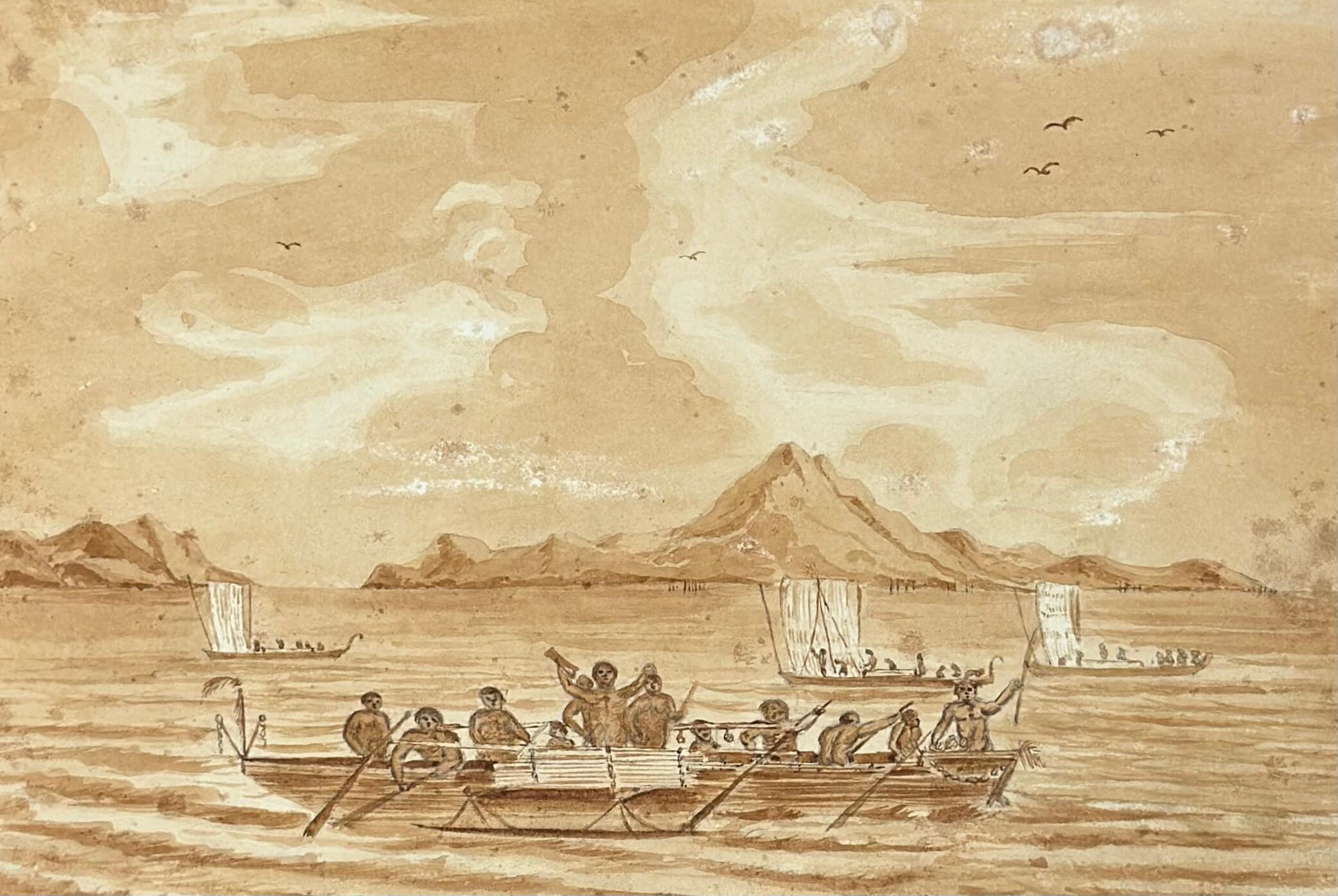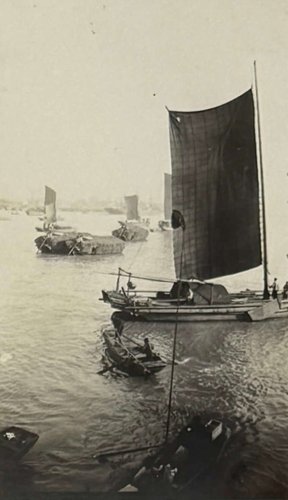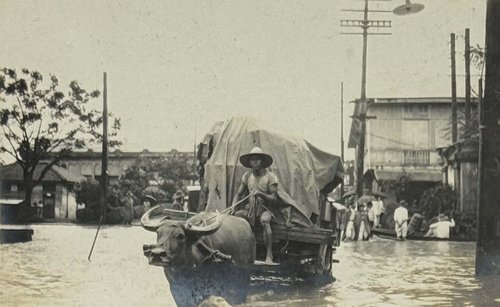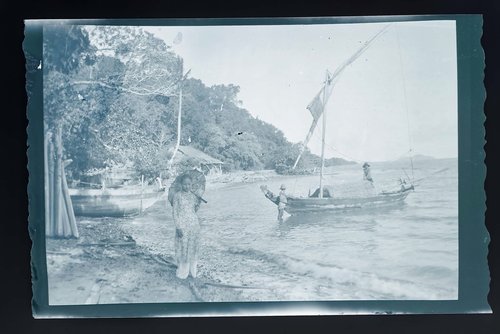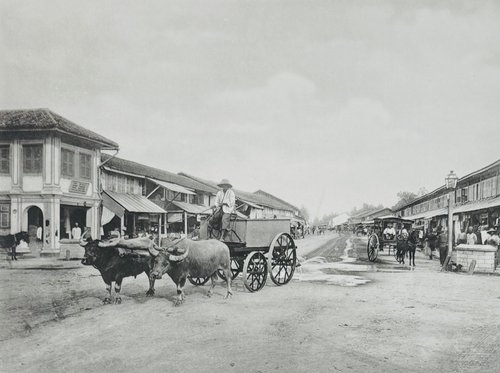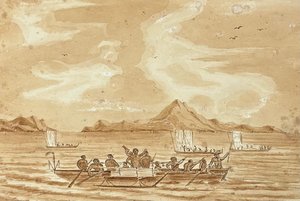
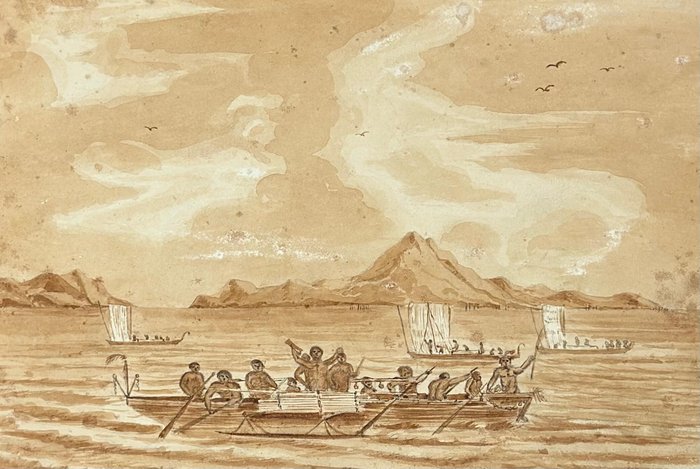
#MC44
Ca. 1820s
Brown watercolour and pencil on paper, ca. 15,5x23 cm (6x9 in). Recently matted, very good watercolour.
The view obviously taken from the ship’s deck, shows the inhabitants of Timor approaching in boats in attempt to sell their goods; a mountainous shore reveals itself in the background.
The drawings were made during one of the voyages of ‘Elphinstone’, and the artist was very likely the crew member, Lieutenant William Bowater (the sketch book was inscribed in ink with the initials 'W.B.' on the front endpaper). Bowater was later dismissed from the navy.
“On the 2nd of November, 1829, a court-martial, presided over by Captain R. Morgan, of the Marine, was convened at Bombay, to inquire into certain charges for “insubordinate and disrespectful conduct” on the part of Lieutenant W. Bowater, of the Hon. Company’s ship ‘Elphinstone’, preferred against him by his commanding officer, Captain F.W. Greer and that the sentence of the Court, which was dismissal from the service, was confirmed by the Commander-in-chief of the Bombay Army, Lieutenant-General Sir Sydney Beckwith, K.C.B” (Low, C.R. History of the Indian Navy. 2 vols. Vol. 1. London, 1877. P. 498-499).
The Honourable East India Company’s sloop-of war ‘Elphinstone’, of 18 guns and 387 tons, “was built by Hilhouse & Sons and launched in 1824. She operated out of London as an East Indiaman and participated with the Royal Navy in the New Zealand land wars. She was sold in 1862” (Wikipedia). The ‘Elphinstone’ sailed to the Mediterranean, around the southern tip of Africa and on to the East Indies and Australia.
As Richard Burton noted in ‘First footsteps in East Africa’, the sloop carried out a naval blockade of the Somalian coast in 1825-1833, after a British brig from the Mauritius had been seized, plundered and broken up near Berberah in 1825. “The ‘Elphinstone’ sloop of war (Capt. Greer commanding) was sent to blockade the coast; when her guns opened fire, the people fled with their wives and children, and the spot where a horseman was killed by a cannon ball is still shown on the plain near the town”. <…> Eventually “the Somal bound themselves to abstain from future attacks upon English vessels, and also to refund by annual statements the full amount of plundered property. For the purpose of enforcing the latter stipulation it was resolved that a vessel of war should remain upon the coast until the whole was liquidated. When attempts at evasion occurred, the traffic was stopped by sending all craft outside the guardship, and forbidding intercourse with the shore. The ‘Coote’, the ‘Palinus’ and the ‘Tigris’, in turn with the ‘Elphinstone’, maintained the blockade through the trading season till 1833 (Burton, R. First Footsteps in East Africa. London, 1856. P. Xxxiv-xxxv).

